My King’s County Socks are written with an optional foldover cuff that calls for a provisional cast on. I’ve found when working provisional cast ons in the past that most instructions are written to start with either a crochet chain or a looped cast on where the provisional stitches are held on waste yarn until you’re ready to work them again. Here’s the thing though (which I figured out one day when I was grumbling to myself about how fiddly it is to transfer those provisional stitches from the waste yarn onto a needle without twisting them or dropping them or hoping that you don’t have to go back and re-knit the whole thing because you cast them on too tight) – if you have a spare circular needle lying around with a cable long enough to hold all your stitches you can cast on onto that and then work directly from the needle later, saving yourself the time spent grumbling and fiddling to pick up stitches from waste yarn when you’re ready to knit from your cast on again. As a bonus, it’s much easier to get into the rhythm of a looped cast on with two needles than it is with one needle and waste yarn; score one for lazy shortcuts. While I wouldn’t recommend holding all your provisional stitches on a circular needle for larger projects like the body of a sweater (unless you have a very long cable for said needle and are very confident that none of your stitches will slip off before you’re ready to work them again) it works perfectly for smaller magic-loop projects like hat brims or sock cuffs. The needle sizes and number of stitches listed below are specific to my King’s County Socks, but this method can be used for any number of stitches and any weight of yarn with the appropriately sized needles.
Beginning Provisional Cast-On:
For this cast on you’ll need two circular needles:
- one size 2.5mm/US 1.5 (or whatever size you used to get gauge) which will be used to hold the live provisional stitches and
- one size 2.25mm/US 1 (or one size smaller than you used to get gauge) which will be used to knit the cuff itself
Note: you can use DPNs in place of the smaller needle if you’d like to knit your cuff with those instead of using magic-loop. In that case, I would cast on all the stitches onto one single DPN (steps 1-5) and then rearrange them when you are ready to join in the round (as stated in step 6.)
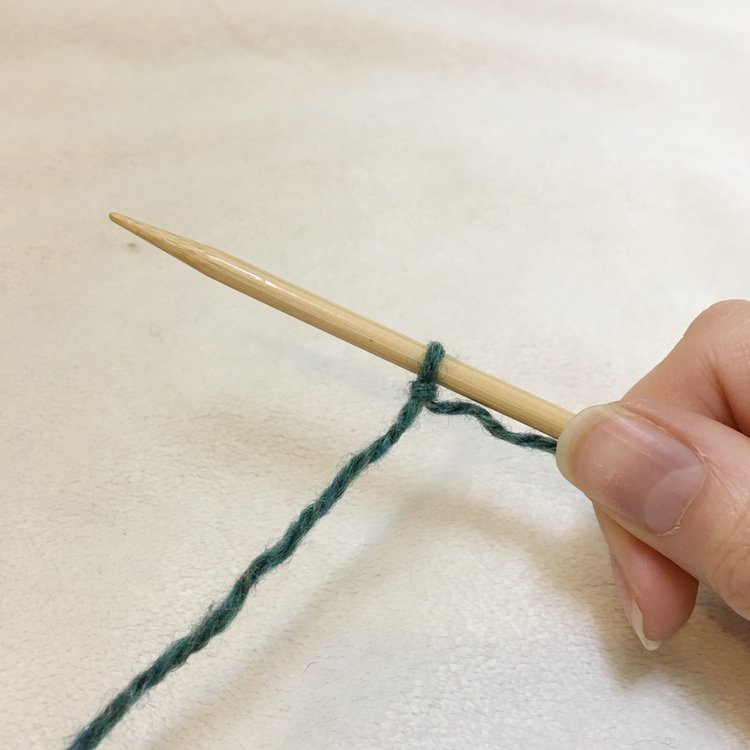
1. Leaving a two inch tail, tie a slip knot in your yarn and tighten it around your smaller (working) needle.
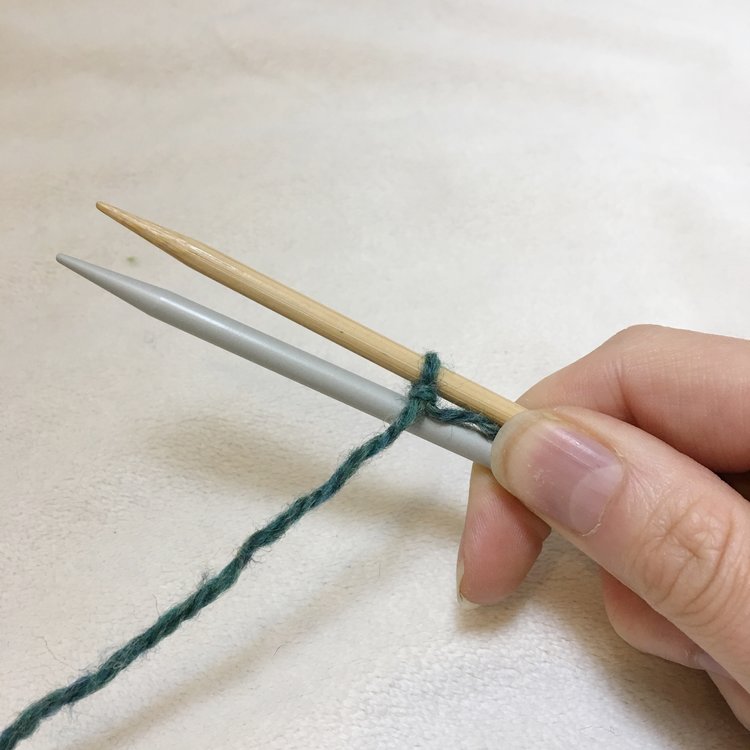
2. Use your right hand to hold this needle and the tail of the yarn with the larger (provisional) needle directly below.
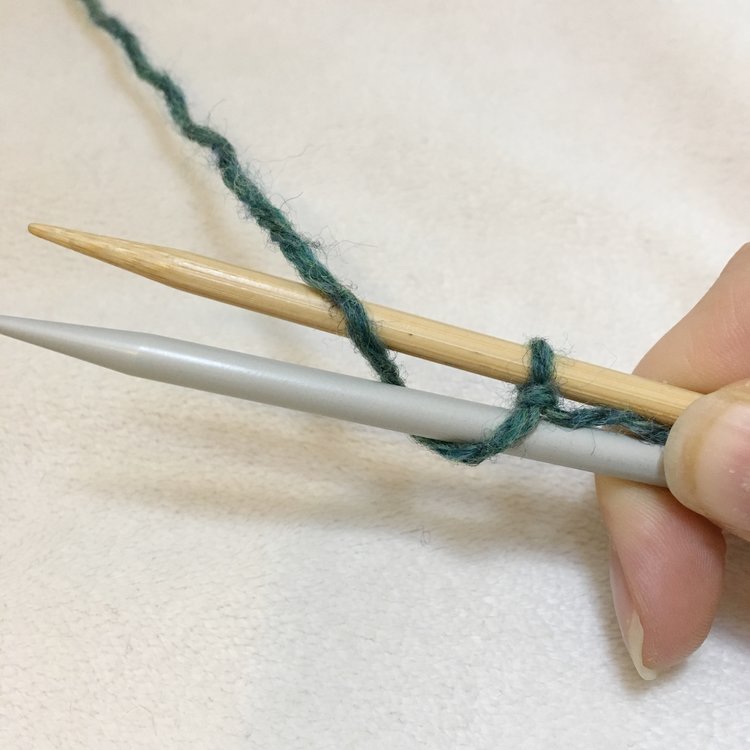
3. Wrap the yarn in front of and under the lower needle…
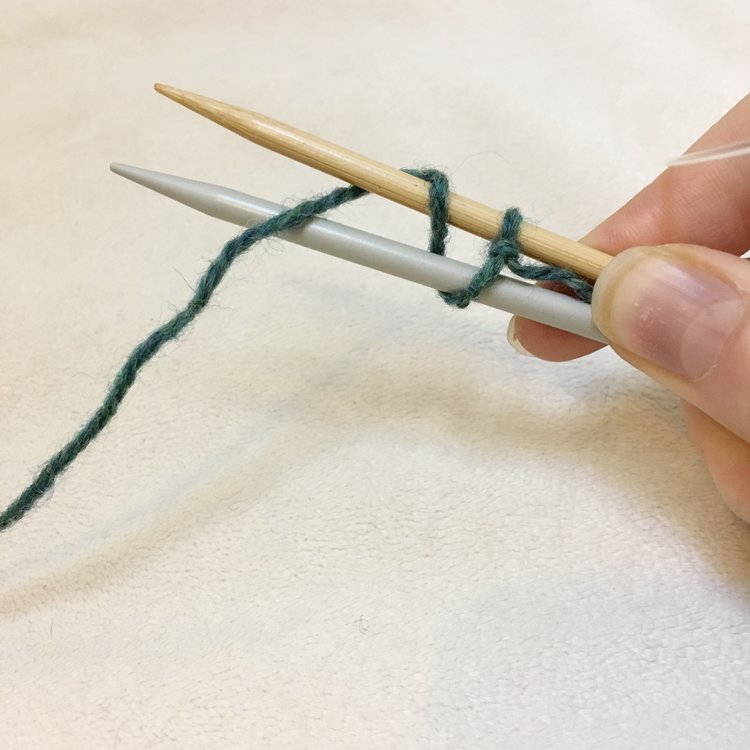
4. Then in front of and over the upper needle.

5. Repeat 3&4 until you have 60[68] stitches on each needle; ending after a Step 3. Pull the lower (provisional) needle through so the stitches rest on the cable.
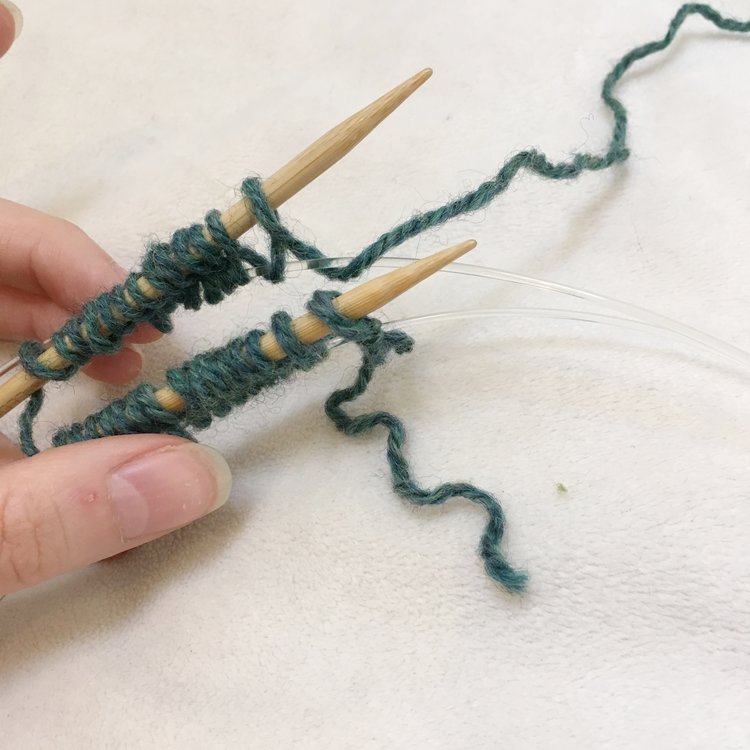
6. Rearrange your stitches & join to work in the round. The lower needle will hold your provisional stitches until you’re ready to join them.
Joining Provisional Cast On
Once you’ve worked 30 rounds of ribbing you need to join your provisional cast on to create the fold over cuff.
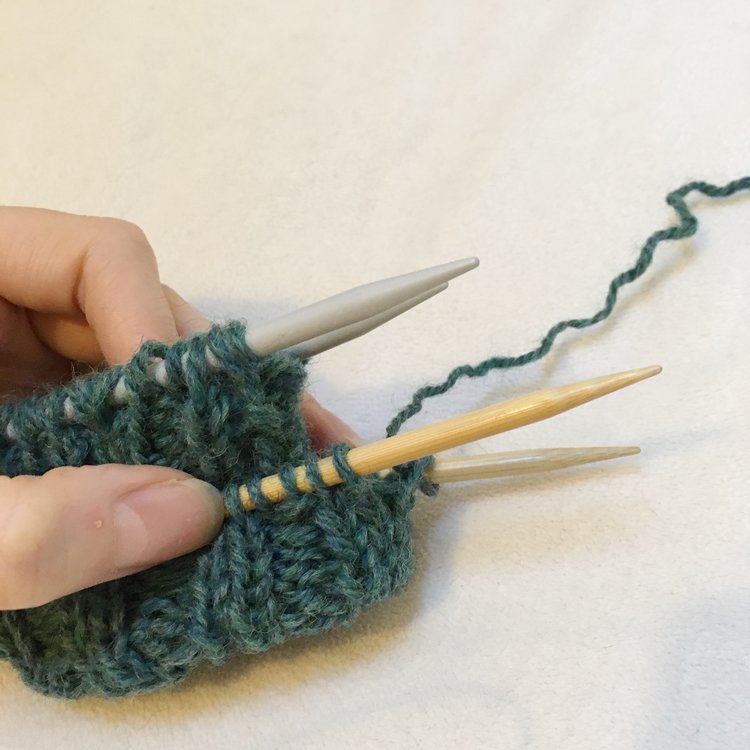
1. Fold the bottom of your cuff upwards so that you can position your provisional stitches inside of the round you just worked. Pull the stitches off of the cable and onto the needles, arranging them so that they match up with the stitches on your working needle.
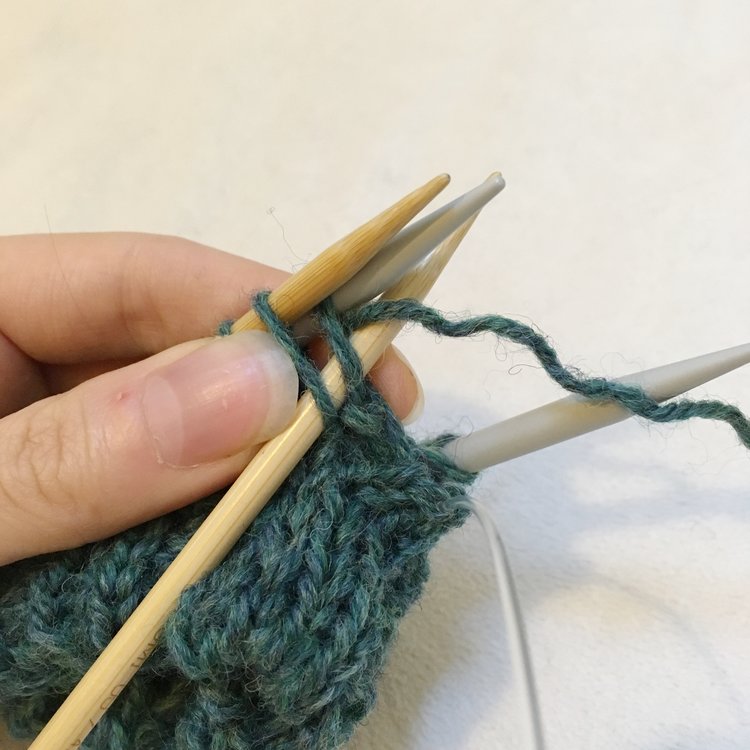
2. Working in your established pattern of 2×2 rib, when you come to a knit stitch place your right needle knitwise through the front of the first stitch on the working needle and the first stitch on the provisional needle and knit them together, combining them into a single stitch.
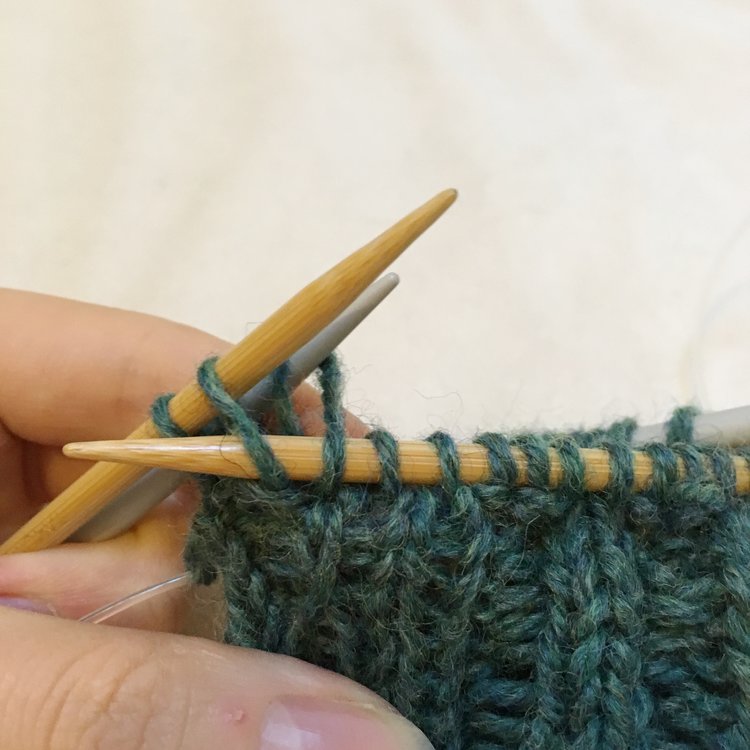
3. When you come to a purl stitch place your right needle purlwise through the front of the first stitch on the provisional needle and the first stitch on the working needle and purl them together, combining them into a single stitch. You should end this round with 60[68] stitches total.
If you want the security of waste yarn keeping your stitches safe or you don’t think navigating around the bulk of an extra needle for a few rows is worth saving a step when picking your provisional stitches back up to work them again, I’d recommend Purl Soho’s One Step Provisional Cast On tutorial which uses a crochet chain method. What’s your favourite way to cast on provisionally? Do you have any other tips & tricks for lazy knitters like me?
